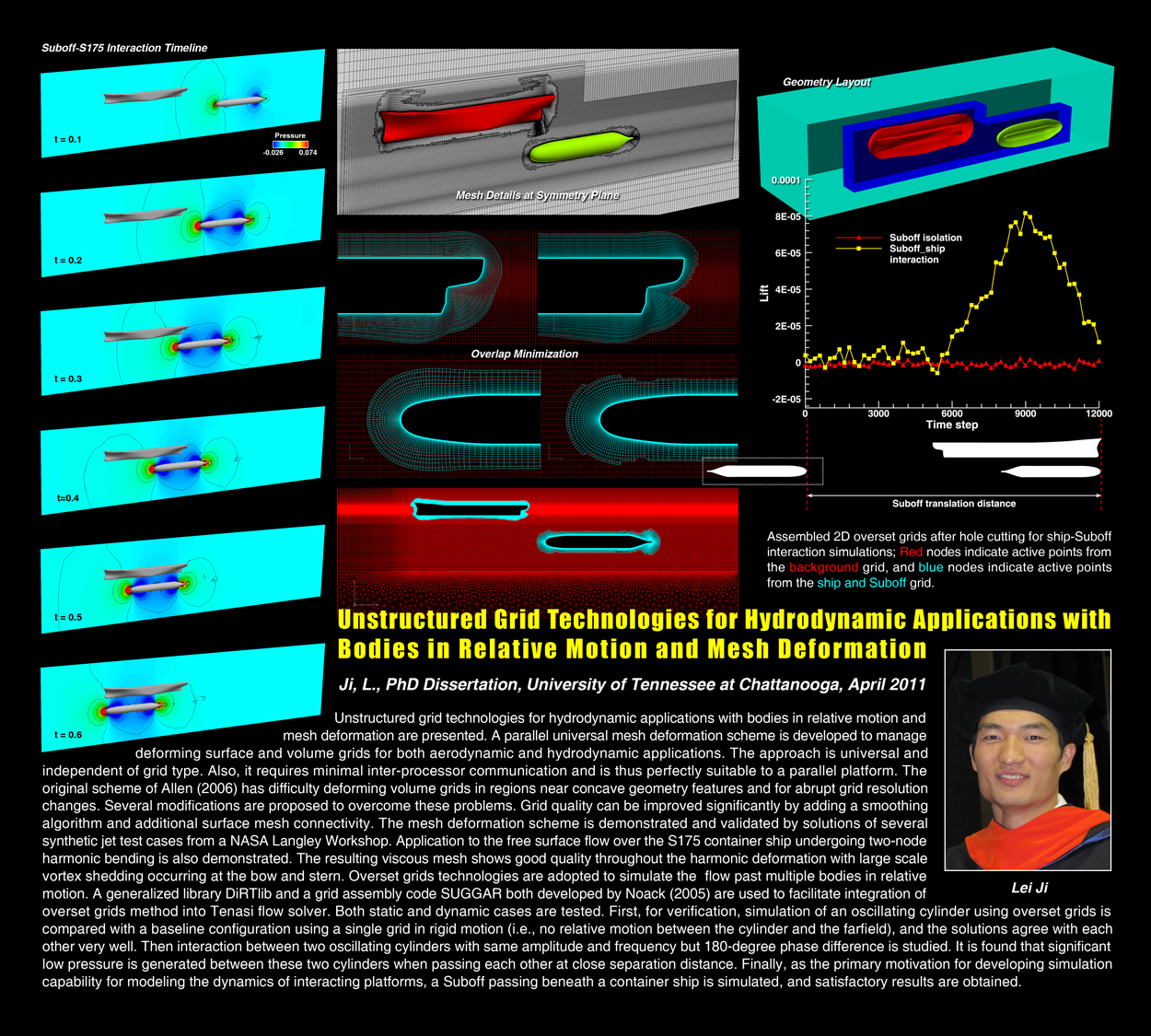Lei Ji
Unstructured Grid Technologies for Hydrodynamic Applications with Bodies in Relative Motion and Mesh Deformation
A Dissertation Presented for the Doctor of Philosophy in Computational Engineering, The University of Tennessee at Chattanooga
Lei Ji, April 2011
Abstract:
Unstructured grid technologies for hydrodynamic applications with bodies in relative motion and mesh deformation are presented. A parallel universal mesh deformation scheme is developed to manage deforming surface and volume grids for both aerodynamic and hydrodynamic applications. The approach is universal and independent of grid type. Also, it requires minimal inter-processor communication and is thus perfectly suitable to a parallel platform. The original scheme of Allen (2006) has difficulty deforming volume grids in regions near concave geometry features and for abrupt grid resolution changes. Several modifications are proposed to overcome these problems. Grid quality can be improved significantly by adding a smoothing algorithm and additional surface mesh connectivity. The mesh deformation scheme is demonstrated and validated by solutions of several synthetic jet test cases from a NASA Langley Workshop. Application to the free surface flow over the S175 container ship undergoing two-node harmonic bending is also demonstrated. The resulting viscous mesh shows good quality throughout the harmonic deformation with large scale vortex shedding occurring at the bow and stern. Overset grids technologies are adopted to simulate the flow past multiple bodies in relative motion. A generalized library DiRTlib and a grid assembly code SUGGAR both developed by Noack (2005) are used to facilitate integration of overset grids method into Tenasi flow solver. Both static and dynamic cases are tested. First, for verification, simulation of an oscillating cylinder using overset grids is compared with a baseline configuration using a single grid in rigid motion (i.e., no relative motion between the cylinder and the farfield), and the solutions agree with each other very well. Then interaction between two oscillating cylinders with same amplitude and frequency but 180-degree phase difference is studied. It is found that significant low pressure is generated between these two cylinders when passing each other at close separation distance. Finally, as the primary motivation for developing simulation capability for modeling the dynamics of interacting platforms, a Suboff passing beneath a container ship is simulated, and satisfactory results are obtained.
